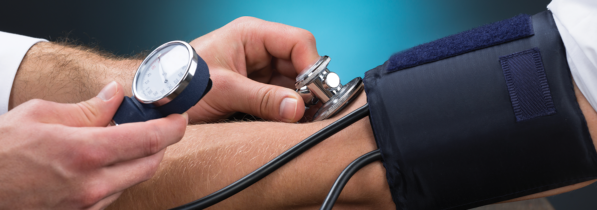
New Multisociety Hypertension Guideline Is Released
Allan S. Brett, MD and Karol E. Watson, MD, PhD, FACC reviewing Whelton PK et al. J Am Coll Cardiol 2017 Nov 13.
The guideline lowers thresholds for categorizing people as having hypertension and for prescribing drug therapy.
Sponsoring Organizations: American College of Cardiology (ACC), American Heart Association (AHA), and nine other organizations
Target Audience: All clinicians
Background
In 2003, the National Institutes of Health (NIH) issued its last guideline on hypertension (Seventh Joint National Committee [JNC7]; NEJM JW Gen Med Jun 15 2003 and JAMA 2003; 289:2560). In 2014, the JNC8 guideline — written by an expert panel no longer affiliated with NIH — was published (NEJM JW Gen Med Jan 15 2014 and JAMA 2014; 311:507). Now, the ACC and AHA have issued a new guideline, intended to be the U.S. standard of care.
Key Recommendations
- Newly defined categories are “elevated blood pressure (BP)” (systolic BP, 120–129 mm Hg and diastolic BP, <80 mm Hg); stage 1 hypertension (systolic BP, 130–139 mm Hg or diastolic BP, 80–89 mm Hg), and stage 2 hypertension (systolic BP, ≥140 mm Hg or diastolic BP, ≥90 mm Hg).
- For people with elevated BP (but not hypertension), lifestyle modification is recommended.
- For people with stage 1 hypertension who have known atherosclerotic cardiovascular disease (CVD) or 10-year cardiovascular risk ≥10% (according to the ACC/AHA calculator, which also is used for cholesterol management), both lifestyle modification and drug therapy are recommended. Stage 1 patients with <10% 10-year risk should pursue lifestyle modification only.
- All people with stage 2 hypertension should receive medication (in addition to lifestyle modification).
- The treatment goal for everyone is <130/80 mm Hg.
I’m not going to change my practice until I weigh responses to this guideline from a broad range of experts. In the end, initiating drug therapy in patients with BPs near treatment thresholds should reflect shared decision-making between clinicians and patients. One of the problems with these guidelines is that they don’t age into account. Older, stiffer arteries may be less forgiving to attempts to lower blood pressure. The risk’s of treatments have to be weighed against the risk of side effects.



